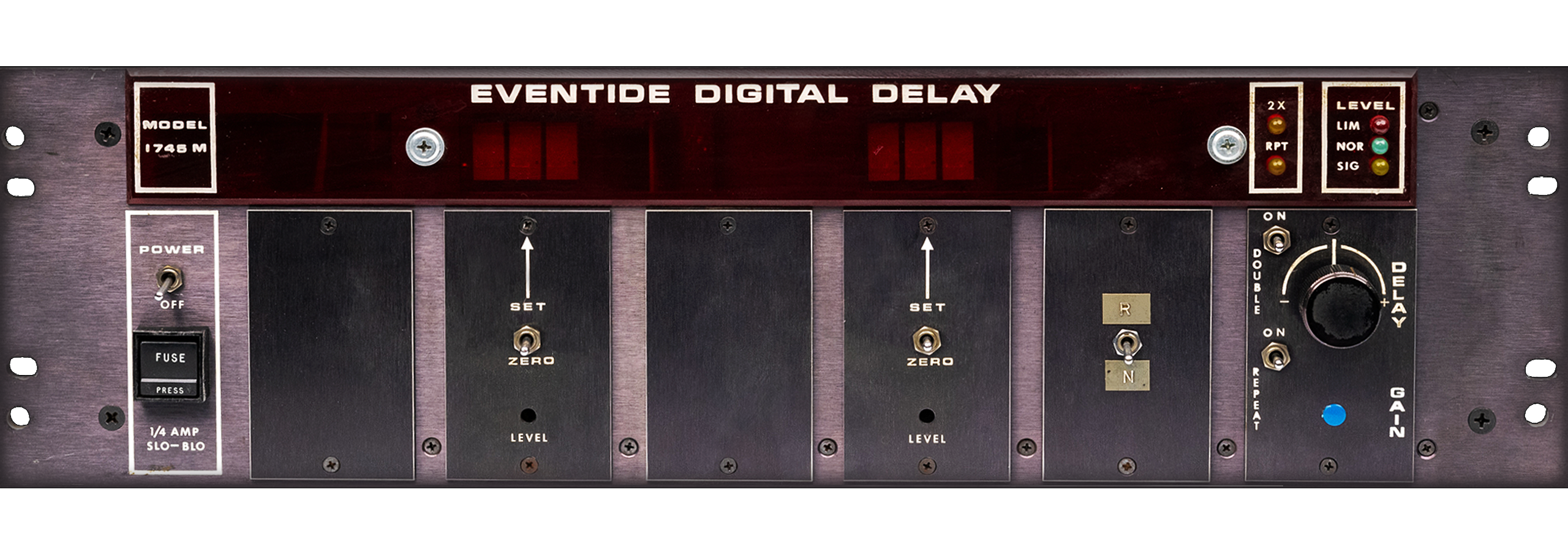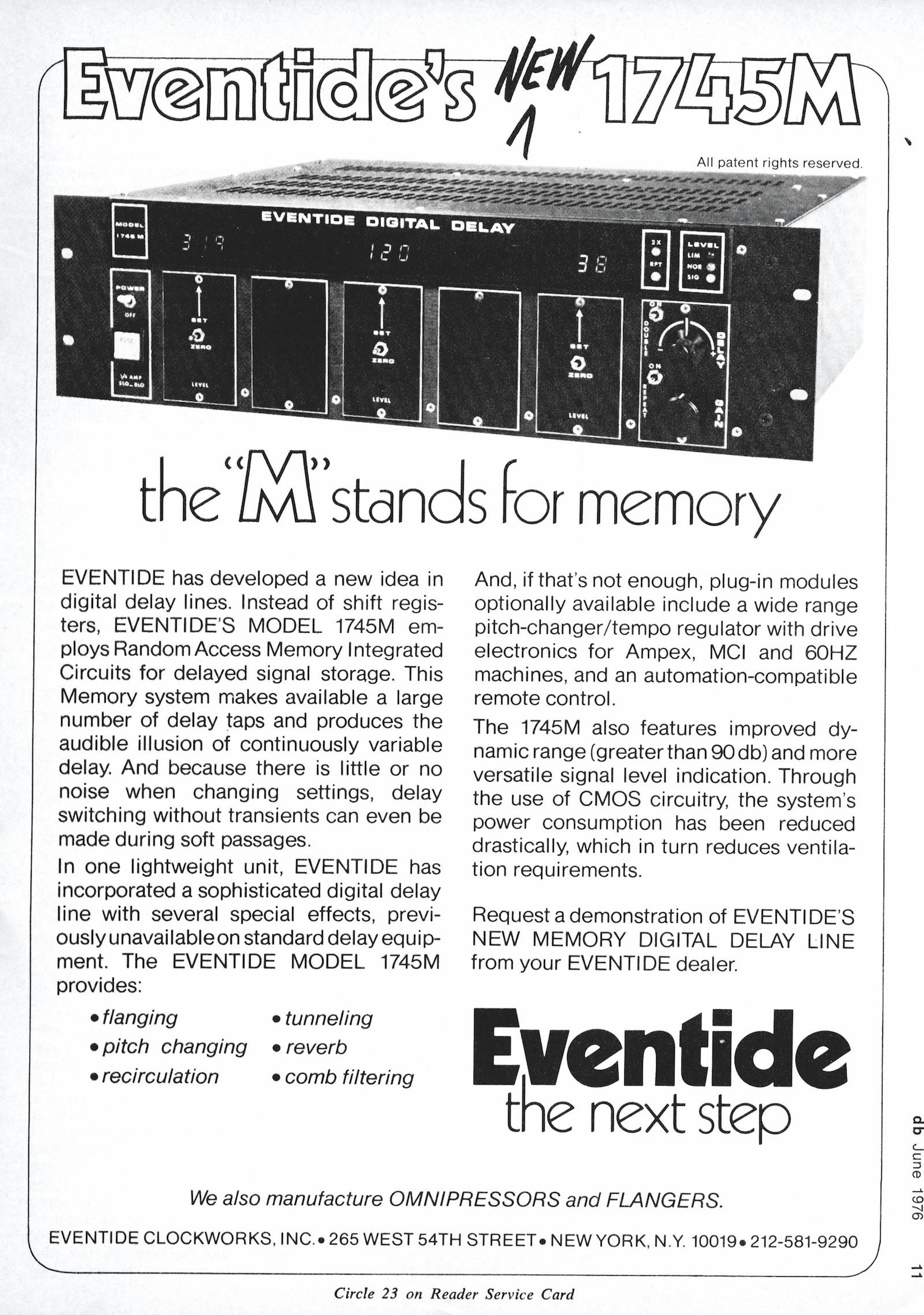The instruction manual for the DDL 1745M digital delay line begins:
Of necessity, this is an unusual instruction manual. Most audio engineers are familiar with audio equipment, and of course, the Model 1745M digital delay line is a piece of audio equipment. However, except for a very small portion of the internal circuitry (the input and output amplifiers) the delay line will be unfamiliar to most people whose experience has been exclusively in the audio field.

A couple of years after the DDL 1745A was released, with the rapid advance of semiconductors, memory chips with densities of 4kbits became available. RAMs (Random Access Memory) made it possible to do much more than simply shift a digital bit through a bunch of shift registers. By being able to actually ‘store’ bits by writing and reading from an addressable location, a wide range of delay-based effects became possible. The DDL1745M represented a significant advance in audio and became the industry standard for delay.
“M” Stands for Memory
The DDL 1745M (“M” for memory) was able to delay audio with much finer resolution and vary delay relatively smoothly which also made pitch change possible. RAM made high-resolution, single sample, delay possible. The ‘resolution’ of a shift-registered-based delay was constrained by the time it took audio to pass through each shift register. In the case of the 1745 and 1745A, that was 2 msec. The 1745M’s delay resolution was one sample, 20 usec – 100X finer! Users would flip a switch on the module and spin the knob to dial in the amount of delay with extreme precision with LED displaying the precise time in fractions of a msec.
While the “M” stood for memory, the 1745M chassis was a modular design with 5 slots holding up to 5 output modules. The standard 1745M shipped with 2 delay output modules but users could install up to a total of 5 independent delay modules. With the 1745Ms 5 outputs, a mono source could create a chorus of five voices or be used as a multitap delay to add ambience to a track.
More than a delay
If you think that you just bought a delay line, think again.
The DDL 1745M Manual touted the unit’s ability to produce a wide range of effects including comb filters, recirculation (or “repeat”), flanging, tunneling, and pitch changing. The pitch change module was made available as an option in 1976, and it became the world’s first electronic pitch shifter for musical applications. Although it had limitations, the 1745Ms pitch changer was used on hundreds of records after its release.
RAM didn’t just make high-resolution, single sample, delay possible. It also made two key features instantly available with a pair of front panel toggle switches—“Double” and “Repeat.” Flipping these switches while turning the delay knob made digital looping possible for the first time. Here’s how those two toggle switches worked: The “Double” switch instantly cut the sample rate in half, thereby doubling the amount of delay. The “Repeat” switch allowed the user to instantly capture any audio currently stored in memory and play it back as an endless loop.
Users quickly discovered that flipping the “Double” switch after capturing a loop would play the loop back at half speed with the audio shifted down by an octave. Alternately, turning Double on first and then Repeat would play a longer loop AND then turning Double off would cause the loop to play back at twice the speed and the audio would play back shifted up by an octave. Flipping those two switches and twisting the delay knob while looping open up a whole new bag of creative tricks.
DDL 1745M Ads



DDL 1745M Images







